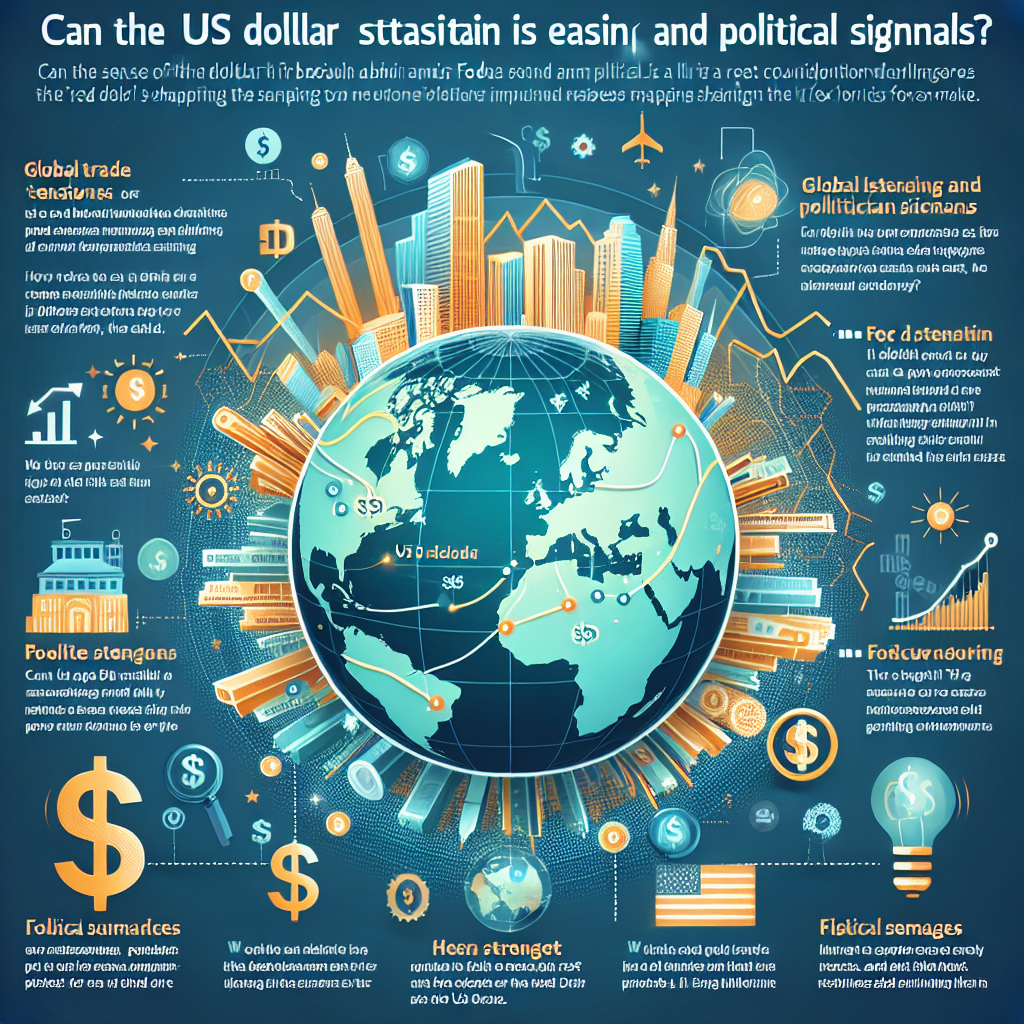
Can the US Dollar Sustain Its Rebound Amid Policy Easing and Political Signals?
Recent fluctuations in the US dollar index have stirred significant market discussions, spotlighting the interplay between US economic policies and the global financial landscape. This article delves into the factors influencing the current trajectory of the US dollar and evaluates its potential to maintain the upward trend.
Recent Trends in the US Dollar’s Performance
The past weeks have exhibited an interesting dynamic in the dollar’s performance. Initially buoyed by softening rhetoric from the Trump administration towards trade relations and Federal Reserve policies, the dollar showed signs of a robust recovery. This shift was markedly visible against a backdrop of earlier bearish sentiment driven largely by pessimistic views on US fiscal reliability and trade stability.
Key Influences on the Dollar’s Trajectory
- Trade Relations: A temporary easing in trade tensions with China contributed to a brief surge in dollar value, as markets responded positively to less aggressive tariff stances. Analysts at ING have highlighted the dollar’s high sensitivity to such geopolitical shifts.
- Federal Reserve’s Stance: Concurrently, less aggressive posturing on interest rate hikes by the Federal Reserve appeared to calm markets. However, this is paired with wary observation of any shifts that might suggest a return to more restrictive monetary policies.
- Global Economic Indicators: Adding another layer are global economic indicators, particularly focusing on how major economies are managing inflation and growth disruptions caused by ongoing conflicts and trade realignments.
- Domestic Economic Signals: Signals about fiscal health from the US Treasury, notably comments by Treasury Secretary Scott Bessent asserting a ‘strong dollar policy’, play a crucial role in shaping sentiment and expectations about the dollar’s haven status.
Challenges and Uncertainties Ahead
The path forward for the US dollar is riddled with both potential uplifts and setbacks. On one hand, any continued positive dialogue between the US and its major trade partners, especially China, could further bolster the dollar. On the other hand, markets remain on edge about the possibility of sudden policy shifts or economic data that could undermine the dollar’s gains. As seen in recent trading patterns, investors are quick to sell off the dollar at any indication of reversing sentiment or worsening economic forecasts.
Conclusion
While the near-term outlook for the US dollar shows signs of bullish recovery, sustained strength depends heavily on consistent and supportive economic and trade policies alongside steady global economic conditions. Market participants will likely continue to scrutinize upcoming US economic data releases, government policy announcements, and international trade developments closely to gauge the dollar’s trajectory. Ultimately, the ability of the dollar to maintain its rebound will hinge on the broader economic environment and the stability of US policies concerning trade and monetary approaches.